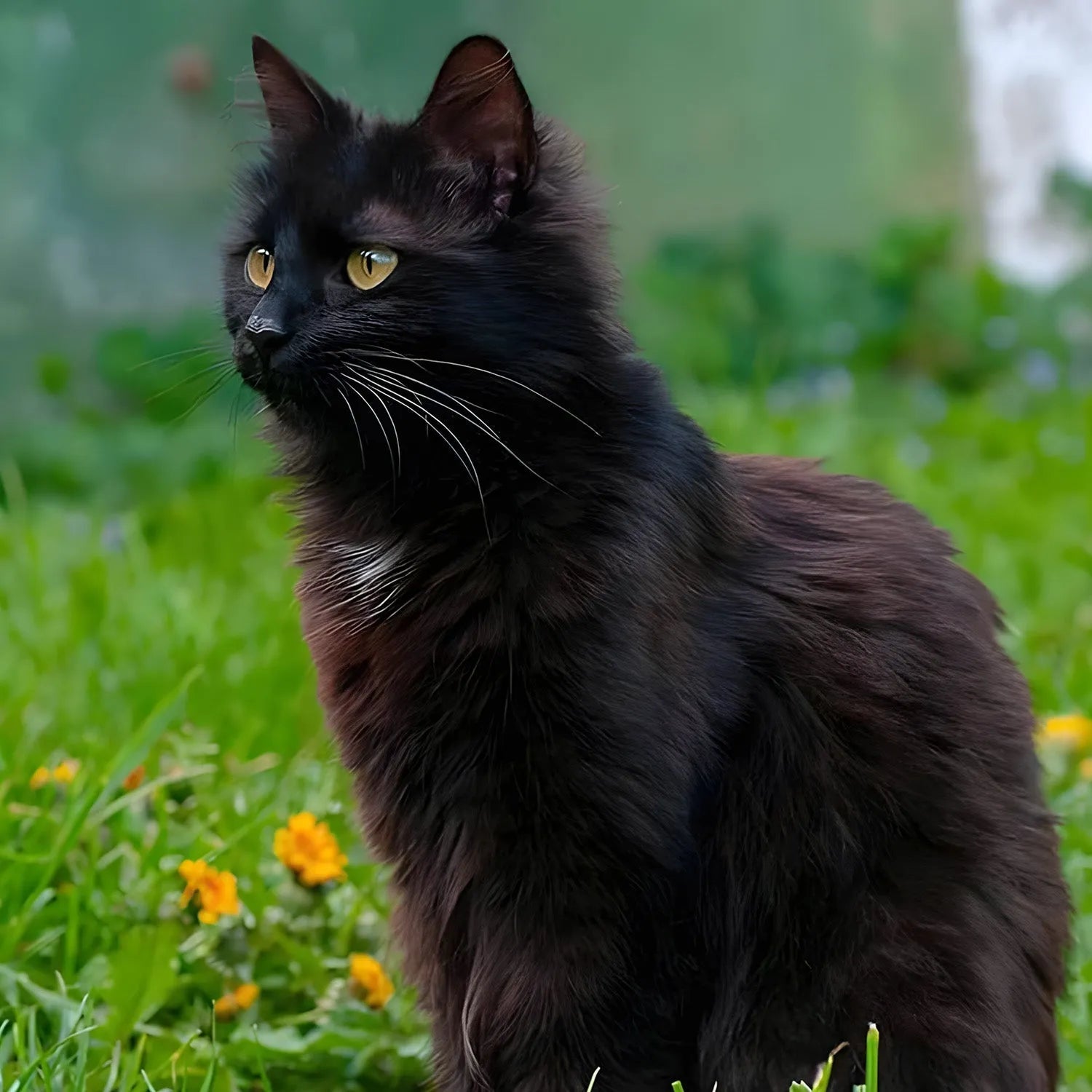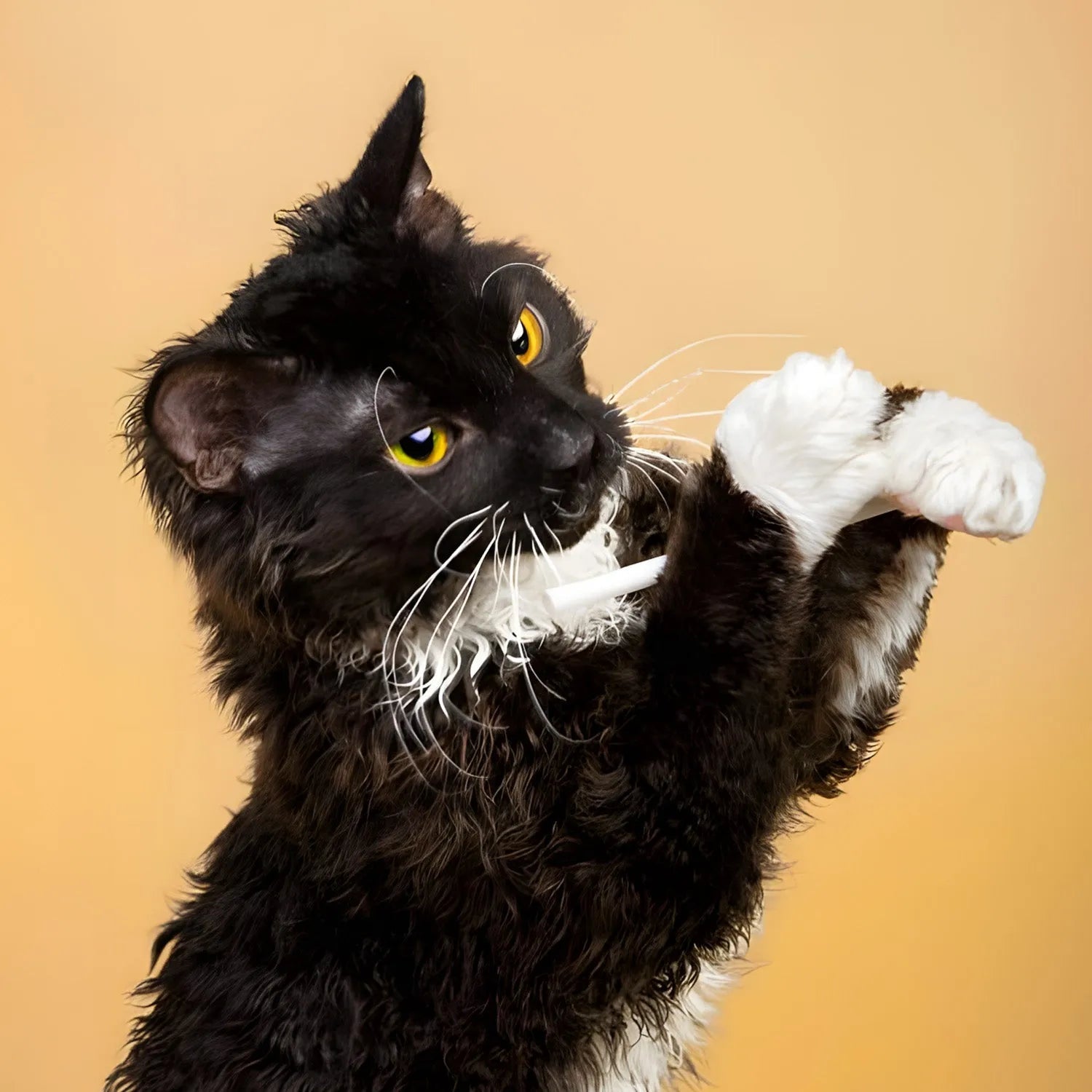Siberian: The Majestic and Hypoallergenic Forest Cat
Introduction
The Siberian cat is a natural breed that hails from the cold forests of Russia. Known for its thick, weatherproof coat and robust, muscular build, the Siberian is both beautiful and hardy. Despite their wild and majestic appearance, Siberians are affectionate, playful, and incredibly loyal to their human companions. Their gentle temperament and hypoallergenic qualities make them a popular choice for cat lovers, particularly those with allergies. In this blog, we’ll explore the Siberian cat’s lifestyle, behavior, grooming needs, and how it interacts with humans and other pets.
Ratings (1-5)
-
Environmental Adaptability: 5
-
Food Consumption: 4
-
Need for Companionship: 4
-
Trainability: 4
-
Tolerance of Children: 5
-
Ease of Domestication: 5
History and Origins
The Siberian cat is a centuries-old breed that originated in the harsh, cold climates of Siberia, Russia. These cats developed naturally, evolving a thick, water-repellent triple coat to survive the frigid conditions of their native land. Siberians are considered one of Russia’s national treasures and have been featured in Russian fairy tales and folklore for generations.
Although the breed has been around for centuries, Siberians were relatively unknown outside of Russia until the late 1980s when they were introduced to the United States and Europe. Since then, the breed has gained popularity due to its affectionate nature, stunning appearance, and hypoallergenic qualities.
Siberians are considered a natural breed, meaning that they were not developed through selective breeding but rather evolved naturally in response to their environment. This has given them a hardy constitution and a well-rounded personality, making them excellent companions.
Physical Characteristics and Colors
The Siberian is a large, powerful cat with a muscular build and strong bones. They are known for their thick, luxurious coats, which protect them from harsh weather conditions. Siberians have a semi-long to long coat that consists of three layers: a dense undercoat, a middle coat, and a water-repellent topcoat. This impressive fur gives them a majestic, lion-like appearance.
Their heads are broad with rounded contours, large expressive eyes, and tufted ears. Their tails are long and bushy, adding to their overall fluffy appearance.
Siberians come in a wide variety of colors and patterns, including:
-
Solid: Black, white, blue, red, and cream.
-
Tabby: Classic, mackerel, or spotted tabby patterns in a range of colors.
-
Bicolor: A combination of white and another color, such as black or blue.
-
Pointed: Similar to Siamese cats, Siberians can have color points on their ears, face, paws, and tail.
Lifestyle and Behavior
Siberian cats are known for their playful, affectionate, and easygoing personalities. Despite their large size and wild appearance, these cats are gentle and love spending time with their human family members. They are social cats that enjoy being involved in family activities and are known for their loyalty and devotion to their owners.
Siberians are also highly intelligent and curious, often engaging in playful antics around the house. They are known for their problem-solving skills and enjoy interactive toys that challenge their minds. Despite their playful nature, they are not as hyperactive as some other breeds and are just as content to curl up for a nap after a good play session.
These cats are adaptable to various living environments and can thrive in both busy households and quieter homes. They are not particularly vocal, but they will communicate with soft chirps and trills when they want attention or to engage with their humans.
Trainability and Intelligence
Siberians are intelligent and trainable cats. They can learn basic commands, tricks, and even how to walk on a leash with the right positive reinforcement. These cats are curious and enjoy exploring their surroundings, making them natural candidates for games and activities that stimulate their minds.
Siberians are quick learners and enjoy solving puzzles or interacting with toys that challenge their intelligence. They respond well to training sessions that use treats and praise as rewards, and they can be taught to fetch, open doors, or even perform simple tricks.
Because they are so intelligent, Siberians need regular mental stimulation to stay happy and healthy. Puzzle toys, interactive feeders, and training sessions can help keep their minds sharp and prevent boredom.
Social Behavior and Human Interaction
Siberians are known for their affectionate and friendly nature. They form strong bonds with their human family members and are often described as "dog-like" in their loyalty and devotion. These cats love being around people and will often follow their owners from room to room, curious about what’s happening in the household.
While they enjoy human interaction, Siberians are also independent enough to entertain themselves when their owners are busy. They are not typically "needy" cats, but they do appreciate attention and will happily seek out cuddles and playtime when they want affection.
Siberians are gentle and patient, making them excellent companions for families with children. They are tolerant of handling and enjoy interactive play, making them great playmates for kids.
Compatibility with Children and Other Pets
Siberian cats are excellent companions for children due to their gentle and tolerant nature. They enjoy playing with kids and are generally patient with children’s antics, provided they are treated with respect. Their large size and robust build make them more resilient than some other breeds, allowing them to engage in active play without becoming overstimulated or frustrated.
In addition to being good with children, Siberians also tend to get along well with other pets, including dogs. Their sociable and adaptable nature allows them to integrate well into multi-pet households, and they often enjoy the company of other animals. Proper introductions are important, but Siberians are generally accepting of new furry family members and are known for their calm and friendly demeanor.
Grooming and Care
The grooming needs of a Siberian cat are moderate due to their thick, triple-layered coat. Regular brushing—two to three times a week—is necessary to keep their fur free of tangles and mats, especially during shedding seasons in the spring and fall. A slicker brush or metal comb is recommended to remove loose hairs and prevent knots from forming.
Despite their thick fur, Siberians are not prone to excessive shedding or matting when properly groomed. Their coats are naturally water-repellent, which helps keep them clean, but occasional baths may be needed, especially during shedding periods.
In addition to regular brushing, Siberians require routine dental care, ear cleaning, and nail trimming to maintain their overall health. Their thick coat can sometimes trap debris, so it’s important to check their ears and fur regularly for dirt or signs of irritation.
Health and Lifespan
Siberians are generally healthy cats with few breed-specific health issues. However, like all cats, they can be prone to certain genetic conditions. Some common health concerns include hypertrophic cardiomyopathy (HCM), a heart condition, and polycystic kidney disease (PKD). Responsible breeders screen for these conditions to reduce the risk of passing them on to future generations.
With proper care, Siberians typically live 12-15 years or more, making them long-term companions for any family. Regular veterinary check-ups, a balanced diet, and maintaining a healthy weight are essential to keeping your Siberian cat in good health.
Environmental Adaptability
Siberians are highly adaptable cats that can thrive in a variety of living environments, from small apartments to larger homes. They are particularly well-suited to indoor living, where they can enjoy a calm and predictable routine. Siberians are known for their calm demeanor and ability to adjust to changes in their environment, making them suitable for busy households or quiet homes.
Because of their playful and curious nature, Siberians appreciate having access to climbing trees, interactive toys, and spaces where they can explore and engage with their surroundings. They enjoy playing games, solving puzzles, and interacting with their human companions.
Siberians are also known for their hypoallergenic qualities. While no cat is entirely hypoallergenic, Siberians produce lower levels of the Fel d 1 protein, which is the primary allergen in cat saliva and dander. Many people with mild to moderate allergies find that they can tolerate being around Siberian cats with minimal reactions, making them a popular choice for allergy sufferers.
Feeding Requirements
A balanced diet is crucial for maintaining the health and energy levels of Siberian cats. High-quality cat food that is rich in protein is recommended to support their muscular build and overall well-being. Fresh water should always be available. Because Siberians are active and energetic, it’s important to monitor their food intake to ensure they are receiving the proper nutrition to support their activity levels.
Consult your veterinarian for specific dietary recommendations based on your cat's age, weight, and health needs
. Regular play sessions and activities that encourage physical movement can also help keep your Siberian healthy and fit.
Conclusion
The Siberian cat is a majestic, intelligent breed that offers a perfect combination of beauty, loyalty, and playfulness. Their strong bonds with their human companions, combined with their hypoallergenic qualities and adaptable nature, make them wonderful pets for families, individuals, or anyone looking for a loving, low-allergen cat. If you’re searching for a loyal and affectionate feline friend that will provide endless companionship and fun, the Siberian may be the perfect fit.
For more information about other cat breeds and pet care tips, stay tuned to our blog!
References:
-
Johnson, S. (2021). "The Majestic and Affectionate Siberian Cat." *Journal of Feline Studies*, 35(3), 215-230.
-
Thompson, A. (2020). "Caring for Your Siberian Cat: A Comprehensive Guide." *Cat Lover’s Magazine*, July issue, pp. 25-33.
-
Harris, E. (2019). "Health and Wellness in Siberian Cats." *Veterinary Journal*, 79(2), 123-137.


